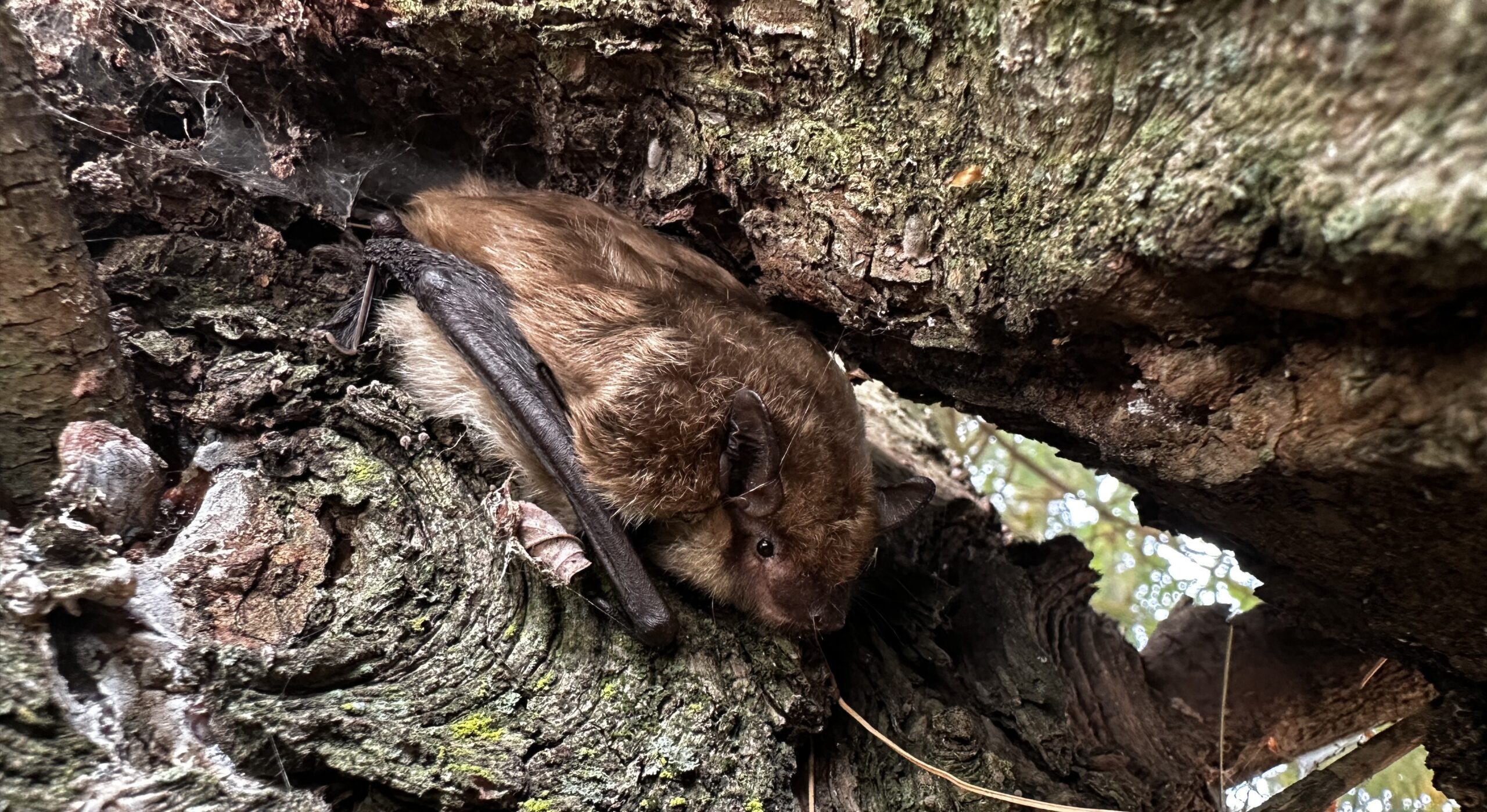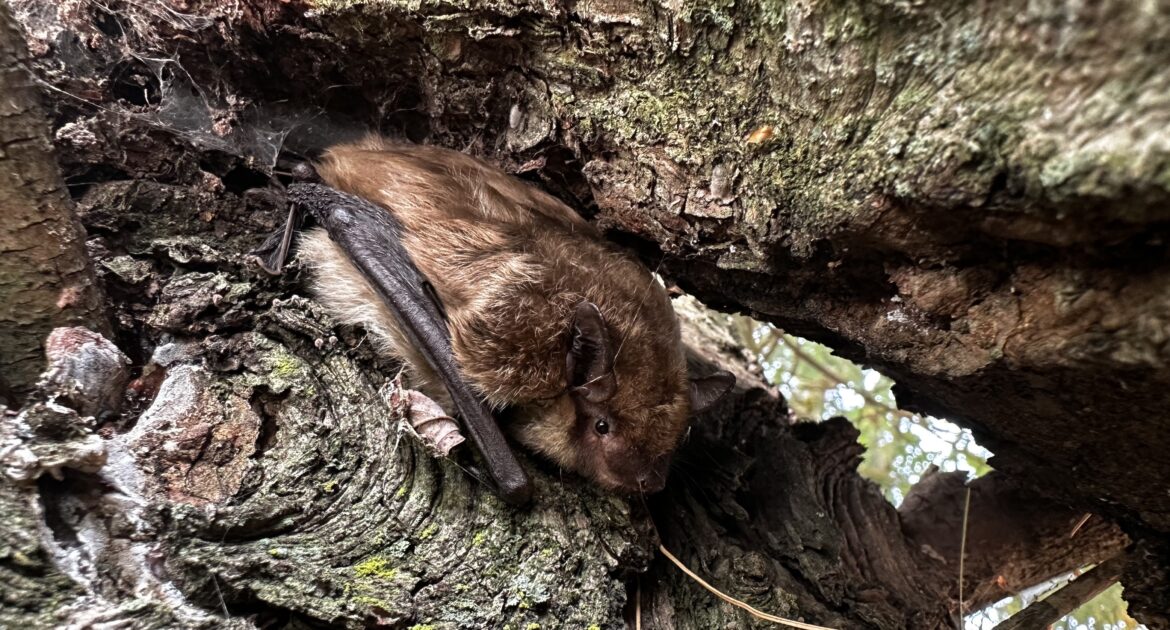Bats becoming uninvited guests in homes is more common than one might think. These nocturnal creatures, while playing a crucial role in our ecosystem, often find their way into residential areas, looking for a cozy corner to call home. Unfortunately, when bats nest in houses, they can cause structural damage and pose health risks. Our team at Skedaddle Humane Wildlife Control specializes in addressing such wildlife intrusions, providing expert and humane solutions to reinstate the harmony of your living space.
Understanding the appropriate time for bat removal is essential for the safety of both the bats and the residents. Bats are protected under local wildlife conservation laws, making the timing of removal crucial. The best time to carry out bat exclusion practices is either before breeding season in late winter and early spring or after the baby bats have grown enough to fly and leave the nest, typically in late summer to early fall. We’re committed to respecting wildlife’s natural lifecycle while ensuring your home is bat-free, following the best practices for wildlife removal in Mississauga.
Understanding Bat Behaviour and Habitats
Bats are fascinating creatures of the night, playing critical roles in our environment, such as pollinating plants and controlling insect populations. Yet, their search for shelter can unknowingly lead them into human homes, seeking safety and a place to rear their young. Understanding their instincts is the first step in fostering coexistence.
These animals prefer lofty, dark spaces for their roosts, mirroring their natural cave habitats. Attics, eaves, and wall cavities in homes inadvertently mimic these conditions, offering an irresistible resting spot. During the maternity season, a typically quiet corner of your home might become a nursery, where they nurture their young until they’re ready to venture into the night sky.
Their nocturnal lifestyle aligns with their feeding habits. Emerging at dusk, they’re on the lookout for insects, demonstrating an impressive pest control service. This rhythm of rest during the day and activity at night is important to their survival, yet it’s this very pattern that can lead to close quarters with humans.
Legal Protections for Bats
When bats are found in urban areas, it’s crucial to consider the laws that protect them. These laws govern how we interact with bats, especially when they end up in our homes. They aim to conserve bats and ensure humane management when they need to be removed from residential properties.
Specific statutes protect bats during vulnerable times like the maternity season. Regulations often prevent any removal efforts during this period to allow the young bats to mature before leaving the roost. This highlights the commitment to preserving bat populations for the future. We follow these laws by waiting until the young bats are ready before taking any action. This not only follows the law but also shows our dedication to ethical practices and conservation.
By discussing these protections, we can understand the delicate balance between human and wildlife habitats. Through open conversations and education, we aim to emphasize the importance of these laws for both bats and the environment. Our role is not just about safely excluding animals but also about maintaining environmental harmony.
Safe and Legal Time Frames for Bat Removal
When dealing with uninvited bats in Mississauga, it’s crucial to know the right times for intervention. These periods are carefully chosen to align with the animals’ natural breeding cycles, minimizing disruption to their ecology. By following these guidelines, we uphold best practices that respect both the law and nature’s balance.
The legal approach focuses on avoiding the breeding season, allowing young bats to thrive. This not only follows conservation laws but also supports their role in pest control. Intervening in late winter or early spring, before babies are born, and in late summer to early fall, after they can fend for themselves, is generally acceptable. It’s a delicate balance between protecting homes and conserving these valuable species.
Our actions are guided by an understanding of the animals’ lifecycle and contributions to the ecosystem. Our commitment to ethical practices ensures that interventions in residential areas are carried out with care for the animals and compliance with legal standards. This careful approach helps preserve ecological balance and their beneficial impact on our environment.
Risks of DIY Bat Removal
Venturing into the realm of handling uninvited guests in your attic or walls without professional guidance can pose significant risks, not to mention the possibility of inadvertently crossing legal boundaries. Our focus today centers on why taking matters into your own hands may not be the wisest choice when it comes to bat removal.
Firstly, the potential for harm extends beyond just the animals involved; there’s a real threat to human health as well. The risk of transferring diseases is a critical concern. These animals can be carriers of rabies or other zoonotic diseases, which can be transmitted to humans through direct contact or exposure to droppings. Without the proper safety equipment and protocols, attempting to deal with these situations on your own can expose you and your loved ones to unnecessary health risks.
Another considerable danger lies in the complexity of ensuring humane treatment. Without an expert understanding of animal behaviour and needs, well-intentioned efforts can lead to distress or even fatality for the creatures. This not only goes against conservation efforts but can have a lasting impact on the local ecosystem, affecting the natural balance.
Furthermore, there’s a legal web to consider. Many regions have strict regulations protecting certain species throughout their reproductive cycles, prohibiting any interventions that could disrupt their nesting periods. Without being aware of these intricate laws, individuals are at high risk of unknowably committing offences, which could lead to fines or other legal repercussions.
Professional Bat Removal Techniques
Need to know how to get rid of bats? In our pursuit of maintaining harmony between urban living and nature, employing humane and efficient strategies for managing wildlife invasions, particularly those involving nocturnal mammals, is paramount. Professional wildlife management services adopt exclusion strategies designed to permit these creatures to vacate premises without the possibility of return, ensuring their safety and the integrity of your living space.
One fundamental method involves the installation of one-way doors at key entry points. This technique allows creatures to leave at dusk in search of food but prevents their return, effectively encouraging them to adopt alternative roosting sites. Another vital strategy is habitat modification, which entails altering the environment around the property to make it less attractive to wildlife. This can include securing food sources, sealing entry holes post-departure to prevent future invasions, and employing visual and auditory deterrents that do not harm the animals.
The need for professional expertise cannot be overstated. Assessing a situation accurately requires knowledge of animal behaviour, breeding cycles, and local ecosystems. Professionals ensure that any strategy implemented is not only effective but also adheres strictly to the legal frameworks designed to protect these species and their habitats. Their experience and understanding of the ecosystem guarantee that the methods used will preserve the delicate balance between human and wildlife coexistence.
Preventing Future Bat Infestations
The key to harmonious coexistence with our natural surroundings lies not only in addressing current unwelcome visitors but in taking proactive steps to deter future entries. At Skedaddle Humane Wildlife Control, we understand the significance of fortifying your home against re-entry, ensuring that once your guests have been humanely encouraged to move on, they stay gone. Here’s how we assist homeowners in safeguarding their spaces:
- Seal Entry Points: We meticulously inspect your home for any breaches such as cracks, holes, and gaps in walls, rooflines, and foundations. Our team specializes in sealing these vulnerabilities with durable materials designed to withstand attempted reentries, ensuring a long-lasting solution.
- Install Preventive Devices: Devices like chimney caps and vent covers act as effective barriers against intruders looking for a new roost. We help select and install the right equipment for your home’s unique needs.
- Alter the Surrounding Habitat: Making your property less inviting plays a crucial role in deterring future visits. We provide guidance on removing attractants such as accessible water sources, overripe fruit, and unsecured garbage.
- Providing Alternative Roosting Sites: While minimizing the appeal of your home, offering alternative sites such as bat houses can be an effective strategy. These provide a safe roosting option, diverting attention away from your living spaces.
The Right Solution for Your Bat Removal Needs
Skedaddle Humane Wildlife Control understands that having bats in your home is not just an inconvenience; it’s a situation that needs to be resolved quickly, effectively, and with the utmost care, compassion, and compliance with local and national laws. Our professionals are equipped with the knowledge to remove bats without causing harm. Your involvement is not just welcome – it is necessary and encouraged. Our team keeps you informed and works with you to make your home the bat-free sanctuary you need.
Choosing us as your partner to avoid a bat nightmare is a wise decision. We have served the Mississauga area for years, offering humane and safe removal services that not only adhere to the laws but also respect the balance of urban wildlife. Our priority is protecting your property, your health, and the local bat population.
The story of wildlife removal in Mississauga is one that revolves around time frames, techniques, and understanding. For successful and legal bat removal, it’s best to call in the professionals. Don’t wait until bats take over your home; contact Skedaddle Humane Wildlife Control to assess your situation and let us guide you through the process.




